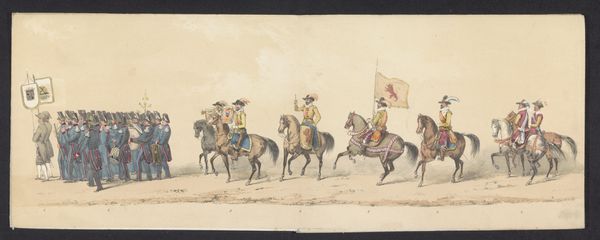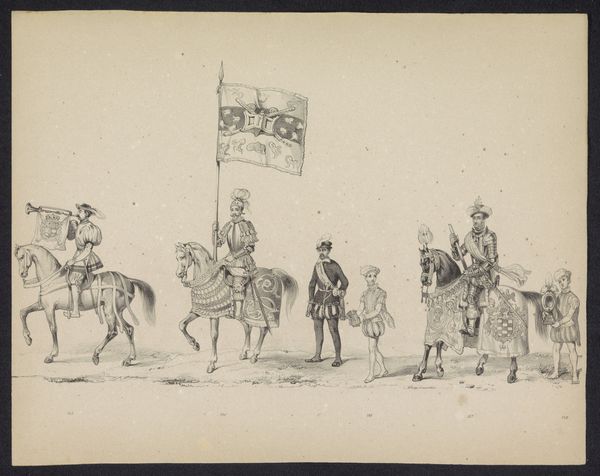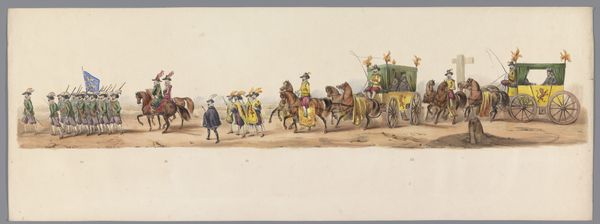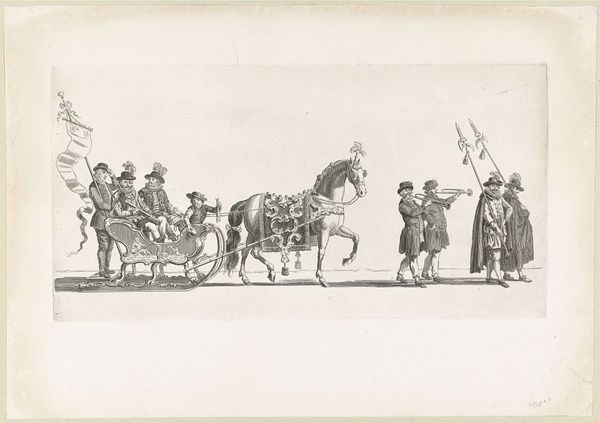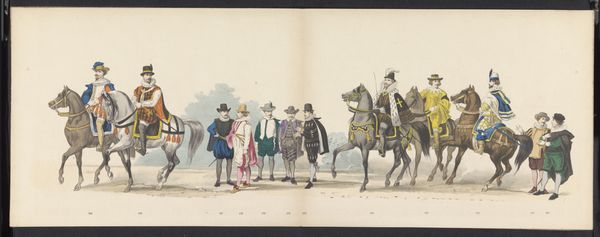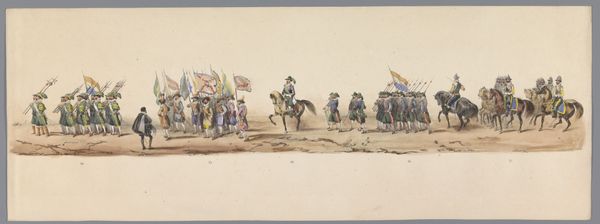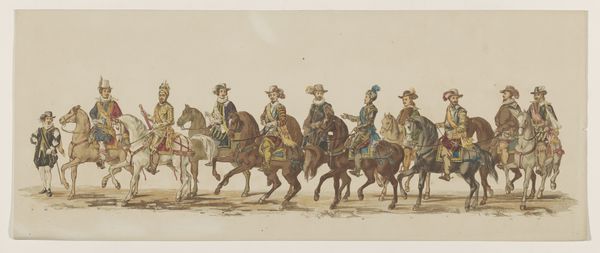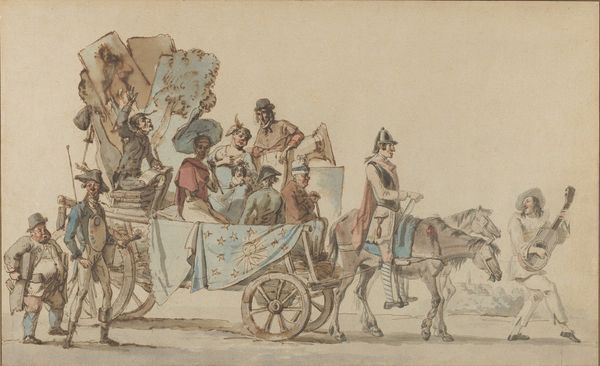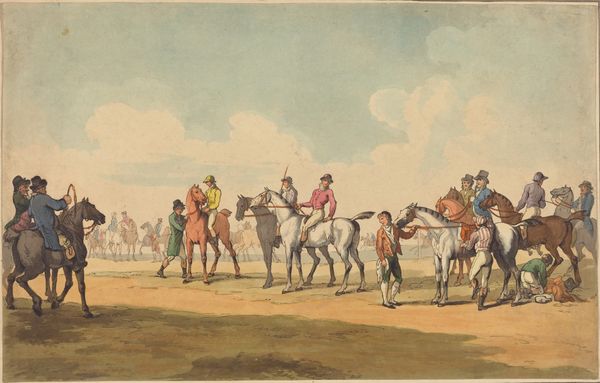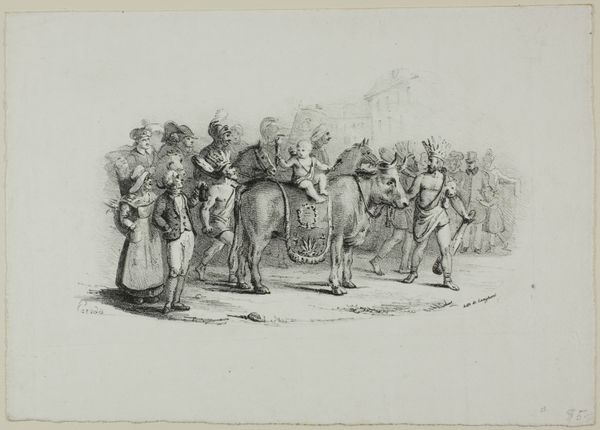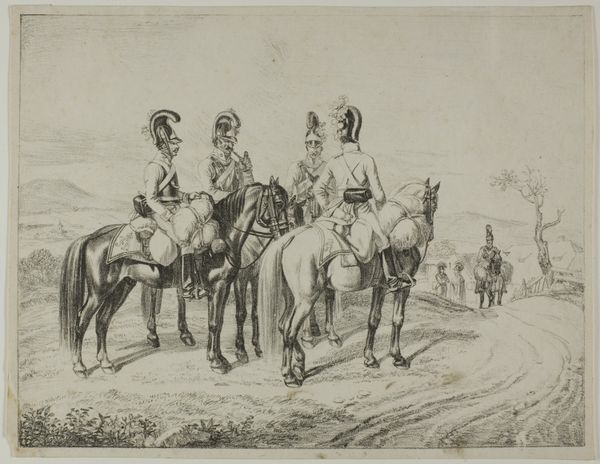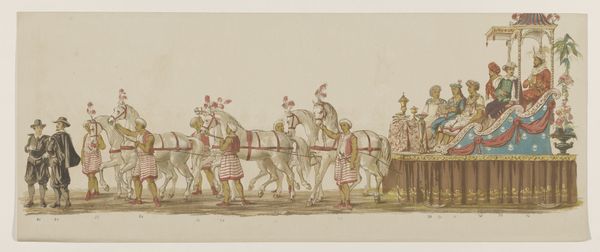
painting, watercolor
#
16_19th-century
#
ink painting
#
painting
#
watercolor
#
watercolour illustration
#
genre-painting
#
realism
Dimensions: height 266 mm, width 671 mm
Copyright: Rijks Museum: Open Domain
Editor: This watercolor painting by Willem Bernardus IJzerdraat, titled "Derde groep in Delftse optocht van 1862," depicts a parade scene. It looks like a float being pulled by horses. What do you see in this piece from a formal perspective? Curator: Focusing solely on the visual elements, I see a deliberate horizontal composition. The artist uses linear perspective to create depth, drawing the eye from left to right, from the horses towards the elaborate float. Notice how the vertical lines of the flags contrast with the horizontal flow of the procession. Editor: I do see that! The repetition of forms—the horses' legs, the vertical lines of the flags—creates a sense of rhythm, doesn't it? And the muted color palette reinforces the sense of historical distance. Curator: Precisely. And observe how the artist uses watercolor techniques. The thin washes allow the underlying paper to contribute to the luminosity, while the precise linework defines the figures and the details on the float. It's a masterful interplay between transparency and definition. Do you think the relatively monochrome colour contributes to the documentary feeling? Editor: That's an interesting point! The lack of vibrant color perhaps pushes it more towards historical record than spectacle. Thinking about how these elements create that effect is so helpful. Thank you! Curator: Indeed. By analyzing these formal aspects—composition, line, color, and medium—we begin to understand how the artwork communicates, regardless of the historical context. I learned something new today too.
Comments
No comments
Be the first to comment and join the conversation on the ultimate creative platform.
